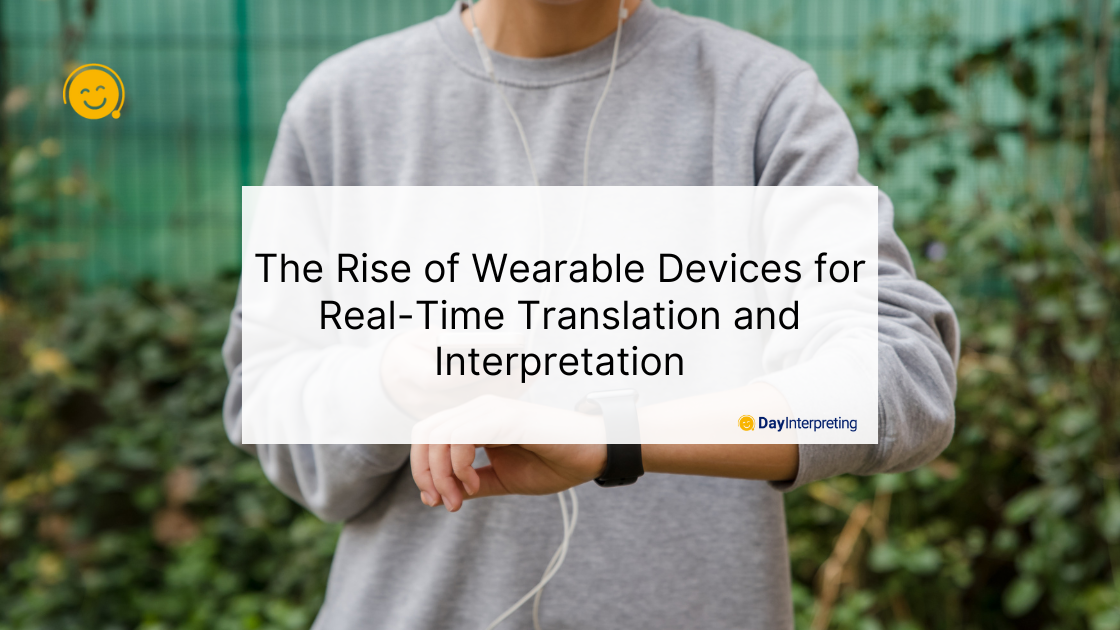In an increasingly interconnected world, the ability to communicate across language barriers has become a paramount necessity. Travel, business, and global collaboration depend on effective communication, and this often means bridging the gap between languages. Fortunately, technology has risen to meet this challenge with the development of wearable devices for real-time translation and interpretation. These devices are not just making communication more accessible; they are fundamentally changing the way we interact with the world. In this article, we will delve into the fascinating evolution of these devices, exploring their inception, current state, and the potential they hold for the future.
The Inception: Early Efforts in Real-Time Translation and Wearable Technology
The roots of real-time translation technology can be traced back to the mid-20th century when machine translation was in its infancy. Early attempts relied on rule-based systems that often produced awkward and inaccurate translations. It wasn’t until the advent of neural machine translation, driven by developments in artificial intelligence, that significant progress was made. This laid the foundation for wearable translation devices as we know them today.
One of the first notable breakthroughs was the introduction of smartphone apps that provided basic translation services. These apps utilized cloud-based machine learning models to translate text and speech, but they still had limitations, particularly in terms of real-time conversation.
The Evolution: Breaking Language Barriers By Moving from Apps to Wearables
The evolution from smartphone apps to dedicated wearable devices was a logical step in the quest for seamless real-time translation. These wearables, compact and unobtrusive, brought the promise of natural and fluid conversation across languages to life.
Hardware Advancements
The hardware powering these devices has undergone significant improvements. Miniaturization and advancements in processing power have made it possible to integrate powerful AI algorithms into tiny, portable devices. These include specialized chips designed for machine learning tasks, ensuring efficient real-time processing.
Software Advancements
The software running on these devices has also evolved. Neural networks and deep learning models have become the backbone of translation and interpretation algorithms. These models continuously learn from vast amounts of multilingual data, resulting in more accurate and context-aware translations.
User Experience
The focus has shifted towards creating user-friendly interfaces that facilitate natural conversations. Wearable translation devices now offer features like noise cancellation, speech recognition, and context understanding, making communication smoother and more effective.
Current State: A Glimpse into the Present State of Translation Technology
As of 2023, wearable translation devices have reached a level of sophistication that was once the stuff of science fiction. Leading brands have released products that offer an impressive array of features:
- Real-Time Voice Translation: These devices can instantly translate spoken words from one language to another, making face-to-face conversations effortless.
- Text Translation: They can also translate written text, making signs, menus, and documents instantly comprehensible in foreign languages.
- Multiple Languages: Many wearables support dozens of languages, making them versatile tools for travelers and international business professionals.
- Offline Capabilities: Some devices no longer rely solely on an internet connection, enabling translation even in remote locations.
- Integration: Integration with popular messaging and video conferencing apps further enhances their utility.
- Accessibility: Wearable translation devices are proving invaluable for individuals with hearing impairments, as they can provide real-time captions and translations and can translate American Sign Language thanks t advanced translation technologies.
The Future: What Lies Ahead for Wearable Devices for Real-Time Translation?
The evolution of wearable translation devices is far from over. The future promises even more exciting developments:
- Biometric Sensors for Wearable Translation Technology: Future wearables may incorporate biometric sensors to gauge emotions and provide context-aware translations. This will enable more empathetic and nuanced communication.
- Augmented Reality (AR) Deployed to Connected Wearable Devices Worldwide: AR glasses with built-in translation capabilities could offer a seamless overlay of translated text onto the real world, revolutionizing how we navigate foreign environments.
- Improved Accuracy of Sign Language Translation Devices: Advancements in AI and machine learning will continue to enhance translation accuracy, making communication even more reliable.
- Global Collaboration on Language Translation: Wearable devices may play a crucial role in breaking down language barriers in international research, diplomacy, and collaboration.
- Customization Beyond American Sign Language: Personalized language profiles could become standard in the world of translate app tech, tailoring translations to individual speech patterns and preferences and allowing them to instantly translate speech to text through automatic speech recognition.
Final Thoughts on Wearable Devices for Real-Time Translation and Interpretation
Wearable devices for real-time translation and interpretation have come a long way from their rudimentary beginnings. They have not only made international travel and business more accessible but have also bridged cultural divides and empowered individuals with new ways to connect. As technology continues to advance, the future of these devices holds the promise of even more seamless communication, further shrinking the world and bringing people together across language boundaries. In a world that grows ever more interconnected, the rise of wearable translation devices is truly a testament to the power of innovation and human ingenuity.





0 Comments